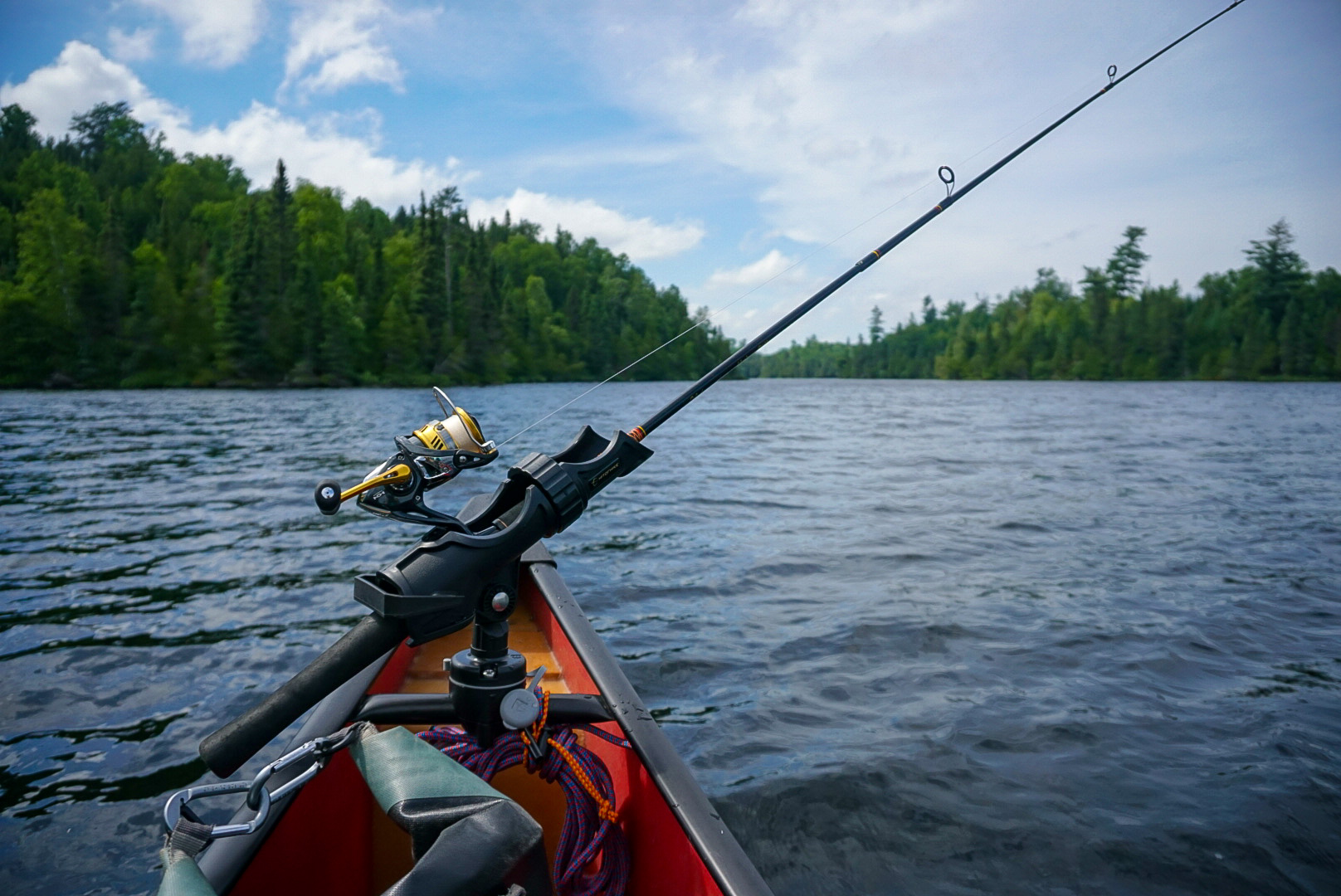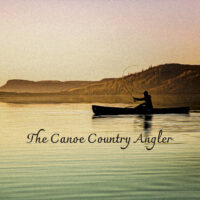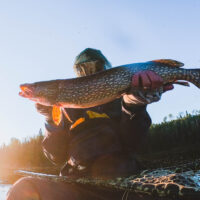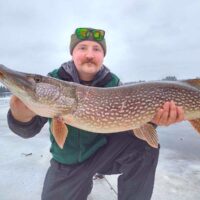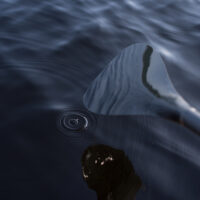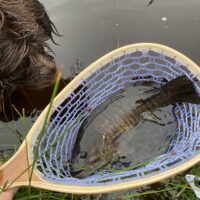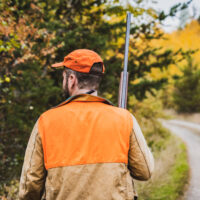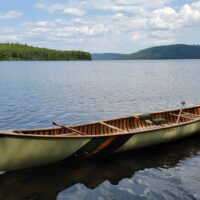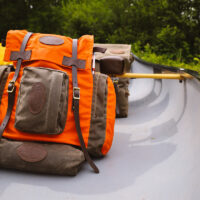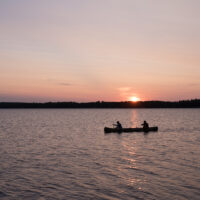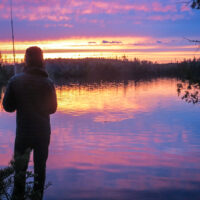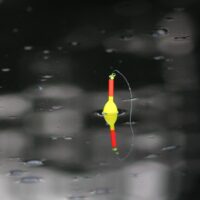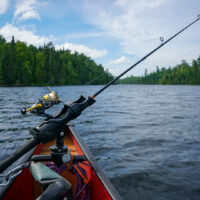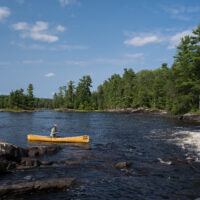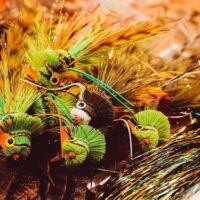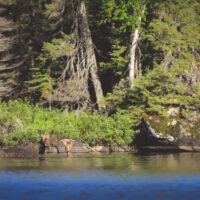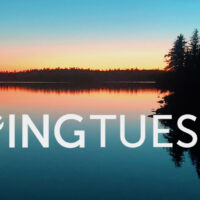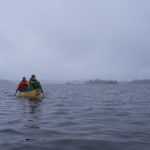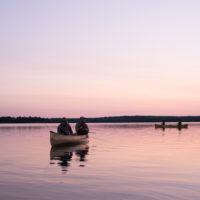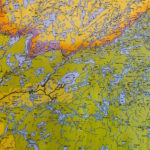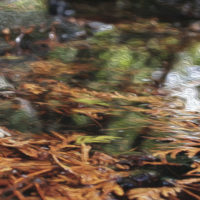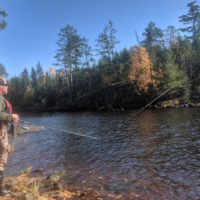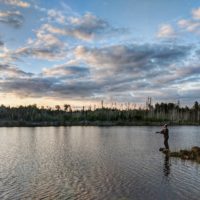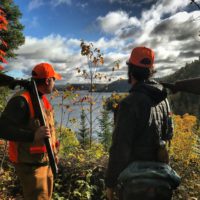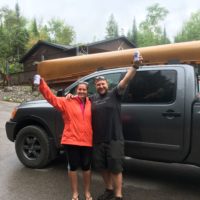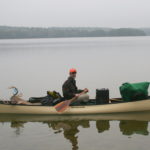What’s the Best Fishing Rod for the Boundary Waters?
August 4, 2022 2:00 pmGuest blog by Omnia Fishing
The best rod for the Boundary Waters Canoe Area in Northern Minnesota depends on what kind of trip you’re taking, how much you’re planning to fish, and how many miles you plan to travel.
Many deep wilderness anglers pride themselves on accessing remote waterbodies, exploring hard-to-reach destinations, and unlocking the secrets to finding and catching fish along the way.
We’ve surveyed a couple of seasoned BWCA anglers in hopes of discovering the best rod strategy for fishing the Boundary Waters. St Croix did not sponsor this article but curiously, each angler recommended a different version of a St Croix rod with a very similar length (about 6’6”) and power (medium). The only difference was the number of pieces and their strategy as to why they prefer 1, 2, or 4-piece rods. All of the rods retail between $100 and $155. Some key considerations include:
- The number of portages between the entry point and the destination
- How tight the wilderness angler likes to pack
- Strategies with a travel partner for managing rods during portages
- If you plan on fishing along the way or will wait until the destination to start fishing.
The number of portages between the entry point and the destination
It’s important to consider the number of portages standing between your entry point and the destination fishing lake. Or, if you’re making a large loop, how and when you’ll fish along the way. This consideration is a key driver for selecting the best rod for the Boundary Waters. With a fully packed 4-piece rod it can be difficult to fish along the way. Portages are generally thin and there’s a chance of running into other portage takers, so you’ll have to wait your turn. If you’re trying to make time to cover a lot of ground and don’t want to set up camp in the dark, it might be difficult to justify fishing along the way so packing away your rod is probably your best option. Otherwise, you’ll need to coordinate with your travel partner and make sure you’re on the same page.
How tight the wilderness angler likes to pack
It’s not always necessary to have all your gear in a single pack but many BWCA canoeists and anglers like to constantly improve their gear to minimize weight. They pride themselves on this skill because it takes a lot of planning and painful learnings in the field. Many trips are heavy when you’re carrying too much and other trips are too light when you leave out a key piece of comfort. Carrying a loose rod is a step in the wrong direction so you’ll need to select a rod that matches your fishing and packing goals in the BWCA.
Strategies with a travel partner for managing rods during portages
Anglers in the Boundary Waters need to coordinate with their canoe mate to make sure their portages will be organized and orderly. Nothing hurts worse than doubling back because one of your party members carries too much loose gear! The portage between some of the lakes is nearly a mile long so multiple trips can take a good part of the day. If you’re planning to fish along the way and still cover a lot of ground with portages, you should check with your party to coordinate who’ll carry rods. This will give you ultimate flexibility to ensure you’re meeting your fishing goals while making portages as painless as possible. Pack light but make sure whoever doesn’t carry the canoe carries the paddles and rods along with their pack.
If you plan on fishing along the way or will wait until the destination to start fishing
This is probably one of the biggest considerations when determining the best rod for the BWCA. A fully packed rod is best when you’re not fishing along the way. The person in the back of the boat is likely spending all his or her time controlling the direction of the boat. Without a quality trolling solution, it’s difficult to fish all the time. But, with 1 and 2-piece rods for the angler in the front of the boat (the canoe muscle), a successful troll along the way can unlock key fishing spots that you might not have found without a lure in the water. Just consider the number and length of portages and if you and your canoe mate are on the same page.
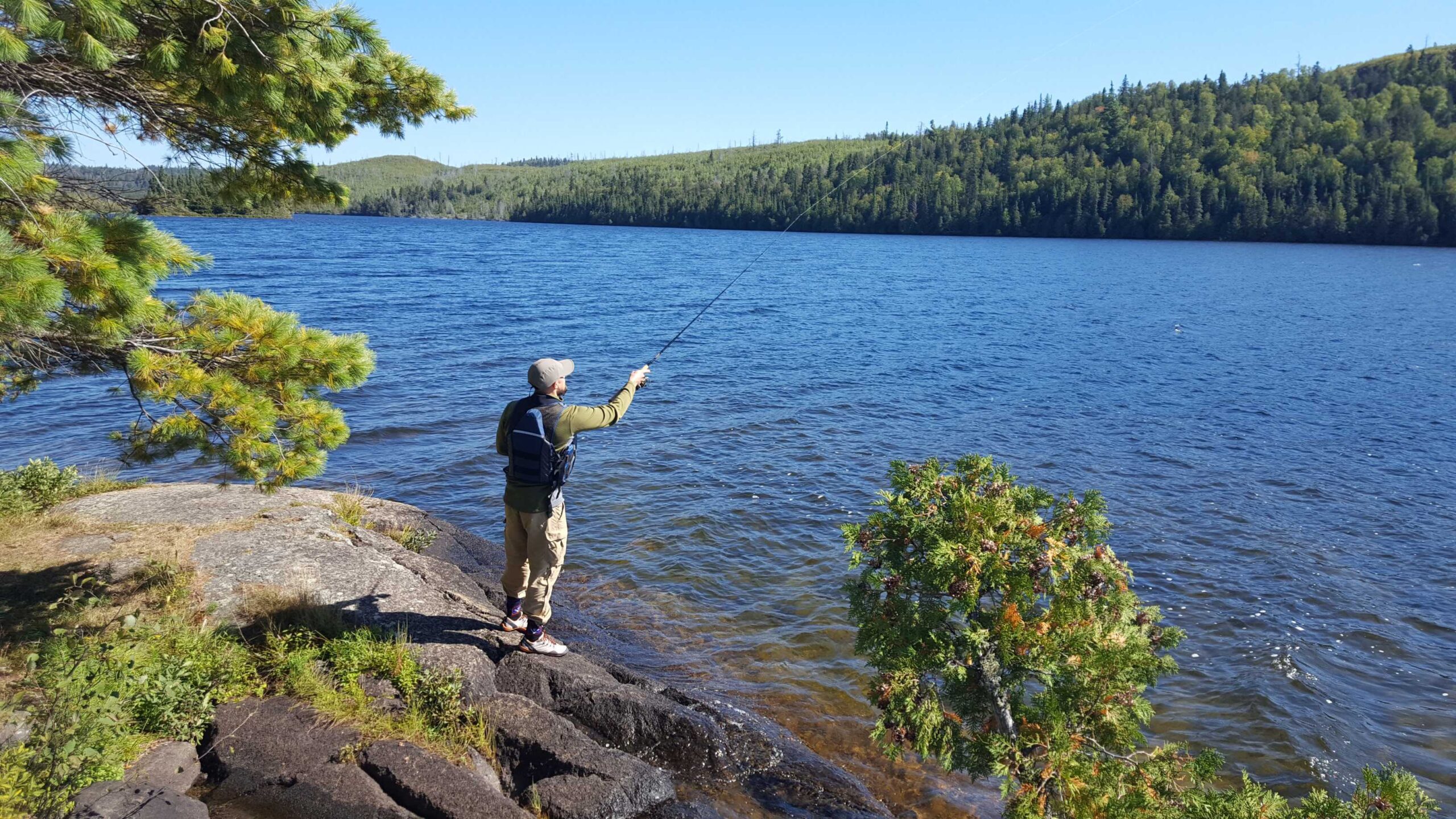
Expert opinion on the best rod for fishing the Boundary Waters Canoe Area
We caught up with biologist Tim Mitchell, Omnia CEO Matt Johnson, and SFBW’s own Lukas Leaf, all of which had a different approach to selecting the best rod for fishing and portaging in the BWCA. All three defended a different style of rod and here are their suggestions and reasoning behind how they select their rod and reel when planning a trip to the BWCA:
One-Piece Rod – Tim Mitchell, Research Biologist
Tim Mitchell, an extremely seasoned wilderness angler, prides himself on finding spots that might hold fish all along his trip path. Mitchell commented, “I can’t paddle across these beautiful lakes after I’ve been waiting all year to head into the Boundary Waters!” In areas like the BWCA, there aren’t well-defined spots for holding fish. Maps aren’t great and the season is so short that patterns transition quickly. Tim uses the constant fishing technique to find areas that hold fish by trolling along the way. This requires that Tim is ready to cover multiple depths in the water column so he keeps a mix of different baits in a hard sunglasses case that can be inserted into his pocket at portage time. We wrote about this hack in a separate post. This allows him to keep his bigger tackle case packed tight with the rest of his gear while covering multiple depths in the water column with a quick change of tackle.
Many anglers have designed their rod strategy around the rest of their trip strategy. In Tim’s case, he has grown up adapting his trip and portage plan to match his rod choice of an “always ready” 1-piece rod. It would take more time to unpack and repack a rod each time in Tim’s preference. His canoe partner can also bring a single-piece rod that’s rigged and when they get to a portage, they each take a pack, one takes the canoe, and the other carries the paddles and rods. Otherwise, Tim will quickly lash his rod to the inside of the canoe for easy portaging without a lot of loose gear. The rod Tim selected as the best rod for fishing the boundary waters in a 1-piece design is the St. Croix Premier Spinning Rod.
St. Croix Premier Spinning 6’6” Medium
Tim prefers a medium-action rod in a 6’6” length in a spinning model for best all-around species and technique fishing.
Two-Piece Rod – Lukas Leaf, Sportsmen for the Boundary Waters
Lukas Leaf has spent as much time fishing the boundary waters as just about anyone and even guided anglers for a period. Lukas takes a hybrid approach to rod selection and likes to have his rod packed for safety when traveling in the BWCA but doesn’t need to have it completely packed away in case he’d like to fish on the way. He’s also admittedly hard on his gear and has broken tips on portages or had them fall and break or get stepped on at camp. For these reasons he always brings a few 2-piece rods and packs them in a hard case tube. He keeps his rods packed in the hard case while portaging but will sometimes assemble a rod before paddling so he can troll or stop and fish if an opportunity presents itself. He likes to assemble his rods once he reaches camp, so he has multiple presentations ready for fishing throughout the day. If a rod happens to break, he always has a backup.
St. Croix Triumph 2-Piece Spinning Rod 6’6” Medium-Light
Lashing a rod to a canoe or carrying a full 1-piece rod is too risky in Lukas’ opinion so he likes something that breaks down and can be stored in a hard case. Many of his trips to the Boundary Waters include a lot of fishing, so while he tries to stay rigged up as often as possible, he doesn’t want to break his gear or bring multiple 1-piece rods to mitigate a snapped tip.
Lukas is also conscious of price. Staying around the $100 price point for each rod eliminates the stress of breaking a rod. For these reasons, his rod of choice is a Wisconsin-made St. Croix Triumph 2-piece in a 6’6” medium or medium light action spinning rod. Matched with 8–10 pound mono and 2 Pflueger President reels, he’s ready for most species, seasons, and techniques.
Four-Piece, Fully Packed Away Rod – Matt Johnson, Omnia Fishing CEO
It’s not necessary to keep all your gear packed until you reach your destination but Matt Johnson, CEO at Omnia Fishing, prides himself on constantly working to minimize gear and reduce weight. Matt is also normally in the back of the boat, so he focuses on straight line paths between portages. He wants to pick up his pack, paddle, and canoe and make a single trip over a portage to the next lake, especially when it’s a long portage. For this reason, Matt uses a 6’6” medium St. Croix Triumph Spinning Travel Rod that breaks down into 4 pieces.
St. Croix Triumph 4-Piece Spinning Travel Rod 6’6” Medium
At $155, this rod is a bit more expensive than 1 and 2-piece rod of a comparable model, weight, and length but Matt “all-in-one-pack” Johnson thinks the extra $50 is worth it. This 4-piece rod is 20-inches long when broken down and comes with a soft wrap to keep it safe in your bag. The 20” mark allows it to fit perfectly in his pack which is a Granite Gear Superior 1 portage pack that measures 25x20x11.
The medium action rod acts more like a medium heavy because of the joints between pieces. This helps with landing a large pike while still acting as a great all-around rod for multi-species. Matt will normally leave his rod packed as they travel to a destination but it’s the first thing he unpacks when he’s arrived. The 4-piece rod is always at the top of the pack. Matt believes that Daiwa makes one of the best price-to-value reels so he pairs a Daiwa Legalis LT in a 2500 size for durability and size.
Most of Matt’s trips are deep destination trips with 3-4 portages from the entry point. Trips are designed with multiple-day trips where a wide variety of species are found. The 4-piece rod typically stays connected during these trips.

Consider All Elements and Trip Details in Conclusion
There’s no right answer to what rod is best for the Boundary Waters. We’ve covered the top considerations for getting a rod safely into the BWCA with as much opportunity to find fish as possible. Change it up on each trip and note the pros and cons of each option. Set expectations with your canoe partner and either design your trip around your rod preference or design your rod selection to meet an upcoming trip scenario. Good luck out there!
For more details about the Boundary Waters, check out the Sportsmen for the Boundary Waters Blog and other BWCA fishing resources at Omnia Fishing. For a video from Matt Johnson, Lukas Leaf, and Tim Michell, check out this video and article at Omnia Fishing.
St Croix did not sponsor this post, but all three contributors just happened to use quality St. Croix rods.
Also, check out Tim Mitchell’s Travel Hack for Fishing the Boundary Waters – Packed Tight but Ready to Fish!
Categorised in: Blog, Fishing, News, Partnerships, Uncategorized

